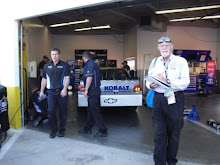The mascot for Darlington is a revised Kepler with a little help from the Hubble telescope and a large inspirational contribution from Gerrit Dou.
Kepler, an astronomer of the late 1590's, made the observation that "all things happen for a reason, and those reasons are the fundamental forces of the universe. If you duplicate the reasons you replicate the results."
This simple statement by Kepler essentially started all of modern science and mathematics.
Although known as an astronomer Kepler never made any observations of his own, his eye-sight was terrible; he worked out the mathematics from other people's data; notably that of Tycho Brahe. Delightful book, Heavenly Intrigue by Anne-Lee Gilder and Joshua Gilder, which suggests that Kepler may have murdered, poisoned, Brahe in order to gain possession of the trove of celestial observation data collected by his employer, Brahe.
One of the interesting bits Kepler gets credit for discovering is the fact that the quantity of
(V ^2 ) r,.. this is velocity squared, i.e., velocity multiplied by velocity then multiplied by radius r,
is the same for all planets; V is the velocity of the planet orbiting the sun, squared, multiplied by the mean radius, r, of its orbit yields the same number for all the (then known) planets. Kepler couldn't explain why this might be true, it was just a fact of observed data. The explanation would have to wait for almost 100 years and Newton, Leibnitz and the Bernoulli's.
The planets are held in their orbit by gravity; a race car is able to navigate a turn due to the pull of the wheels keeping it on the track which provides the same function as gravity does for the planets. Race cars can navigate a corner faster if a track is banked, higher banking allows higher speeds; and larger radius turns also allow higher speeds. If we write these processes into an equation and call it the Kepler Index, KI, then
where QS is the qualifying speed of a track, the Greek letter Beta, B, is the banking angle of the turns and r is the radius of the turns.
The Kepler Index, KI, is essentially the same number for all tracks,... except the SMI trio of Atlanta, Charlotte and Texas (more on that in the next post).
Moreover, Qualifying Speed can be fairly well predicted from the banking angle and radius of the turns on a track.
Whereas the size of the track alone is not very useful in predicting qualifying speeds but it is informative; note the difference between the qualifying speed at Pocono with its three distinct corners compared to the symmetrical tracks of Indy, and Daytona, with all three tracks the same size, 2.5 miles around 1 lap.
TV does not convey the distinctive nature of the various tracks, the contrasting differences are astonishing. Darlington is shown outlined in Black and it is easy to see why it was called the first super speedway, it's nearly the size of Atlanta. But note it is not symmetrical, turns 1 and 2 are much larger in radius than 3 and 4, moreover, turns 1 and 2 are more steeply banked (by 2 degrees) and the straight-a-ways are nearly flat. Richmond, site of last week's race is shown in the infield of Darlington, and Martinsville, the week before just outside the Darlington and Atlanta outlines.
This whole configuration would fit inside of the Talladega infield,….twice.
The asymmetry of Darlington is what makes it so challenging, turns 1 and 2 can be driven at a much higher speed than 3 and 4, not only because of the radius but the flatter banking of 3 and 4 also contributes to lower cornering speeds. If Richmond was the test of brakes and gear choice, then Darlington is the consummate test for the vehicle dynamics engineers and people who run the 7 post rigs. This is ultimate and confounding set-up problem for weight balance, springs, shocks, anti-sway bar, roll center, camber, and polar moment of inertia,..this is math modeling nirvana.
The races are much more distinctive than what a viewer would imagine by watching the race on TV.
 The original calculation by Kepler from the Brahe data would yield the following graph (augmented by modern data for the three planets discovered since 1600).
The original calculation by Kepler from the Brahe data would yield the following graph (augmented by modern data for the three planets discovered since 1600).The real painting of the "Astronomer by Candle Light" is by Gerrit Dou (in 1665); this detail is from a photograph taken by the J Paul Getty Museum ©.
And, finally, we have a new use for old incandescent light bulbs: turn them into oil lamps.


+2.jpg)









The FastTrack RC Team enjoyed this post.
ReplyDelete